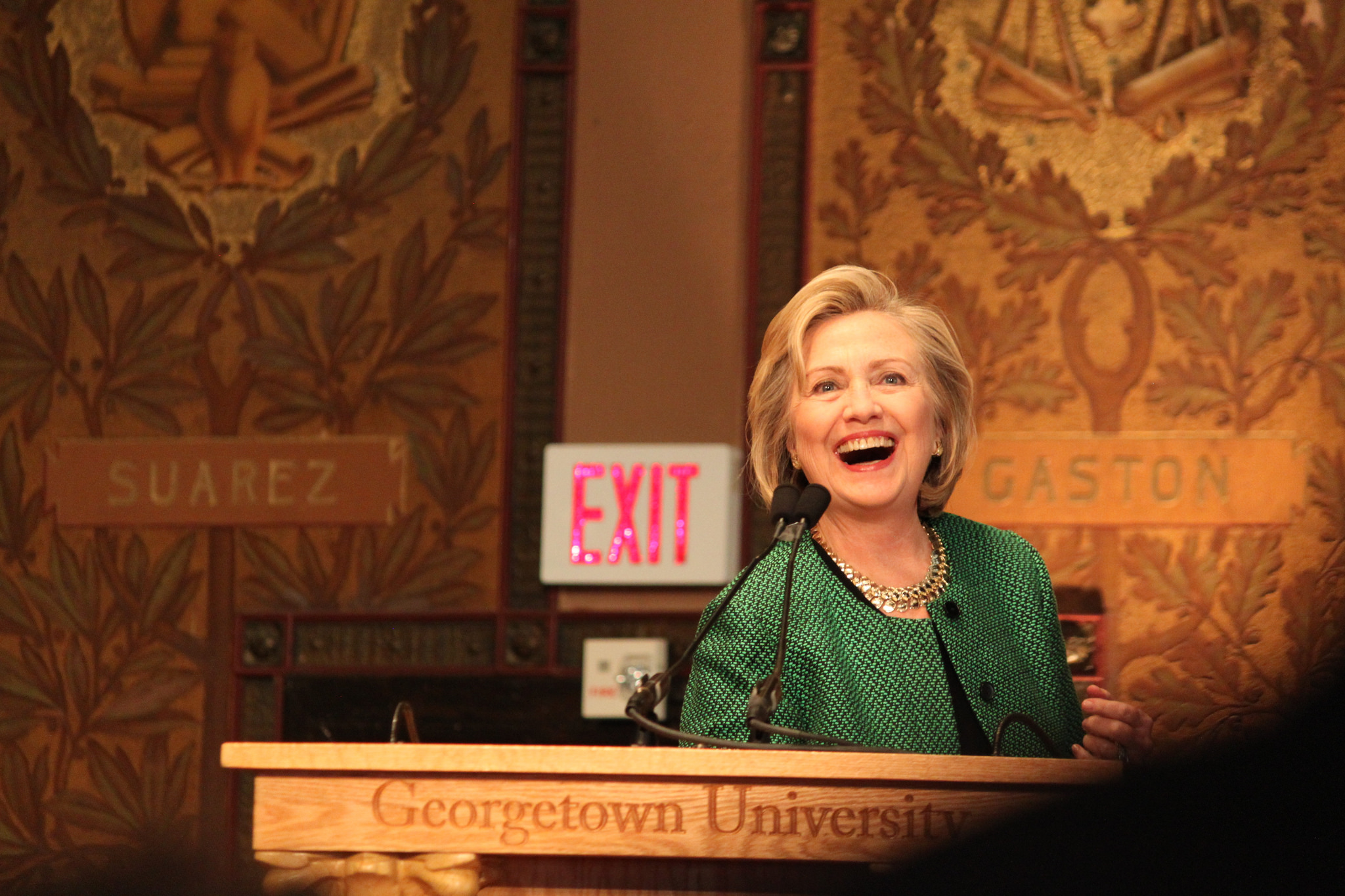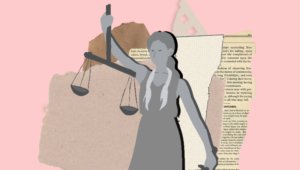We all have our toolkits. For a young girl, it’s some cheap dollar store glitter haphazardly strewn across her eyelids (when Mom wasn’t looking) that makes her feel fearless and invincible. For Hillary Clinton, it’s a pantsuit that makes her feel capable and authoritative.
For me, clothing has never just been pragmatic. Instead, clothing has been about asserting my independence, channeling my favorite aspects about myself and amplifying those characteristics. When I feel strong, I wear a jet-black blazer with a cotton white tank top. When I feel confident, I wear navy culottes with a floral top. When I need inspiration or motivation because life becomes a little more than I can handle, I lift myself up with some studded heels and a long sleeve shirt with a stabilizing lavender stripe along the front. Getting dressed is more than part of my morning routine. It’s a reflection of where I am in life. Everyone should be entitled to this relationship with their clothing.
My roommates and I asked each other to describe the outfit in which we would feel strongest. Without thinking, I said an angular, structured, masculine black suit with a deep-V neckline. (Although I would never admit to this, my dream power outfit might be a glorified pantsuit.) A few moments of silence ensued. My friends looked taken-aback. Then it hit me: my power outfit was described as masculine. By me.
This worried me a lot. If I couldn’t see myself feeling powerful in, say, a shift dress and blazer, how could I ever hope for the public to take female leaders seriously in anything other than a pantsuit?
Over the summer, The New York Times ran an article decoding the new rules of power dressing for women worldwide. The “Hillary Clinton Pantsuit” is a misnomer. Female leaders across the globe, from Angela Merkel to Theresa May, all don similar uniforms of suits and pants in varying shades of jewel or pastel tones. Even on television, the landscape of female power dressing doesn’t look like it came from the creativity of a costume designer. Fictional women in power subscribe to the exact same dress code.
May has a reputation for loving shoes (a certain pair of leopard print kitten heels in particular). How great is it that little girls across the globe can raid their mothers’ closets now that funky printed heels are no longer just fun and fancy, but powerful? Now women in power can wear whatever kaleidoscopic shoe they want with a pantsuit in whatever shade of psychedelic they can find. I was meditating on how satisfying it is to experience this new wave of understanding regarding the canary yellow pantsuit when my mom yelled over my shoulder, “Why can’t Hillary look as good as those other women? She looks frumpy. Who wears a shamrock pantsuit?”
And just like that, I realized we have so much work still to do. Hillary Clinton, for example, has the opportunity to define what it means to dress like a female American presidential candidate. There is no precedent for her to abide by. What we’re learning as we dive with Clinton into this new territory, is that it’s probably best not to focus too much on clothing, and rather to dress just like the guys, especially now that wearing anything other than pants would be front page news.
This is disappointing because most young women will never own a pantsuit until they’re in their mid-twenties. They will own a dress and a cardigan, or maybe a skirt and a blazer. If we want to fix the gender gap in politics, today’s little girls need to look at Hillary Clinton and see themselves. But they can’t right now because she dresses in a way that is very other. It’s unique to women in power. Aspiring young women need to see a female role model being powerful in a way that is attainable and relatable for them. They need to feel like they can grab the nearest blouse or skirt in their closet and be confident and authoritative. They shouldn’t have to believe that the only way they could stand where Clinton is standing is if they wear an outfit divorced from their wardrobe’s aesthetic. And they certainly shouldn’t have to think they need to dress like their male peers in order to work with them.
I came across an article from The Washington Post written in 2007 about the time “there was cleavage on display” underneath one of Hillary Clinton’s pantsuits. America was reminded that despite the pantsuit, Clinton is still a woman.
And women weren’t even allowed to wear trousers on the Senate floor until 1993. That means that in 2016, we’re all still learning how to understand clothing and power, especially when it comes to the female dress code. As a first step, we need to see women fill the roles of president, prime minister, or congresswoman and not notice a difference in their clothing. But as we get more comfortable with seeing female faces on the hilltops worldwide, fashion needs to kick in. The wardrobe of a first lady doesn’t have to be on a different galaxy from the wardrobe of a presidential candidate.
Eventually, I came to terms with my power outfit. The angular, or as I described it, “masculine” structure draws upon this pre-existing idea of power dressing, but then I manipulated that social construction with a more feminine neckline. It pulls from the best in power fashion from fundamentally differing viewpoints, and tries to master this dichotomy. It brings as many fashion perspectives into dialogue with one another. My power outfit is a conscious act of diplomacy and compromise.
Hillary Clinton’s pantsuit sends the message, “Let’s stop talking about my clothing.” And part of that message is correct. But a part of that message is also harmful. Clinton is longtime friends with Donna Karan, one of the most iconic American designers of our time. The two ladies have worked together to create many important outfits in the past decades of American culture. Clinton clearly enjoys fashion, the fact that she feels she needs to put that aside in order to be taken seriously tells us a lot about what we still have to learn when it comes to women and power. By taking any conversation about clothing off the table, we’re holding ourselves back.
There’s a constructive way to approach fashion and politics. It’s not done by placing blame or criticizing outfits. It’s done by encouraging discussion about why politicians wear what they wear, rather than what they wear. Dress can be seen as a visual metaphor for a larger problem of gender politics. There are many styles of dress that are equally underrepresented in our powerhouses. Androgynous clothing and ethnic wear cover a small portion of this void.
To my peers at Georgetown, I ask that when you, one day, are sitting on the Senate floor or giving a speech at a convention, that you don’t change your style to fit a job description. Be bold. Don’t conform to what the majority wears. Be the inspiration the next generation of power dressers need. Little girls are watching you and trying to see themselves being as confident, as strong, and as fearless. Let’s make it easier for them to follow their hearts and make a difference. Let’s show them that you don’t have to change a crucial part of your identity, your style, to achieve a dream.
Emma is a sophomore in the College.





